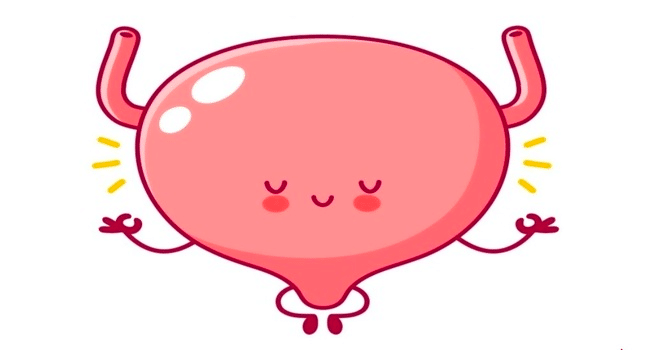Table of Contents
By Dr. Rich Bevan-Thomas, M.D., Urologic Surgeon and Partner at Urology Partners of North Texas.
For many girls, it starts offevolved quietly — a unexpected urge at the manner to the shop, fun that leads to a leak, or that regular worry about locating the nearest rest room anywhere you move.
Overactive bladder (OAB) impacts millions of ladies, yet some distance too many nevertheless accept as true with it’s only a regular a part of growing older. The truth? It’s common — but not normal. And the good news is, it’s also highly treatable.
Understanding Overactive Bladder
Overactive bladder happens when the bladder muscles contract too often or at the wrong times, creating the sudden urge to urinate — sometimes with leakage, sometimes without.
Many women describe it as their bladder “having a mind of its own.” These urges can disrupt work, travel, sleep, intimacy, and confidence — but they’re not something you have to live with.
“We see women every week who have been dealing with these symptoms for years,” says Dr. Geoffrey Nuss, a urologist at Urology Partners of North Texas who specializes in female pelvic and bladder health. “Overactive bladder is incredibly common, but it’s not something women should just accept. The treatments today are remarkably effective.”
What Causes Overactive Bladder?
While OAB becomes extra commonplace with age, it’s no longer due to growing older itself.
Several elements can contribute to bladder overactivity, together with:
- Hormonal changes during and after menopause
- Pelvic floor weakness (often after childbirth)
- Nerve dysfunction affecting bladder signals
- Certain medications or caffeine intake
- Bladder infections or inflammation
In many instances, there isn’t simply one purpose — that’s why a complete assessment is crucial to finding the right remedy.
“Every woman’s bladder behaves a little differently,” explains Dr. Nuss. “For some, it’s muscle overactivity. For others, it’s nerve misfiring or weakened pelvic support. Our goal is to identify why the bladder is overactive — not just treat the symptom.”
The Emotional Side of OAB
For many girls, the toughest a part of overactive bladder isn’t physical — it’s emotional. Constantly planning your life around rest room breaks or demanding about accidents can take a toll on confidence, relationships, or even sleep.
That’s why contemporary treatment focuses now not only on bladder control, however on restoring first-class of existence.
“When women start sleeping through the night again or stop worrying about where the next restroom is, you can see their confidence come back,” says Dr. Nuss. “That’s what makes treating OAB so rewarding — it changes how people live day to day.”
Modern Treatment Options for Women
The good news: Today’s overactive bladder remedies are some distance extra powerful — and a ways less invasive — than ever earlier than.
At UPNT, remedy is customized to each woman’s symptoms, anatomy, and life-style. Options include:
1.
Lifestyle and Behavioral Therapy
The first step regularly includes simple but powerful strategies — figuring out bladder irritants (like caffeine, alcohol, or synthetic sweeteners), adjusting fluid timing, and retraining the bladder. Many women additionally benefit from pelvic floor physical remedy, which strengthens the muscles that guide the bladder.
2.
Medications
Prescription medicines can calm the bladder muscle and reduce urgency or frequency. These are commonly used whilst lifestyle modifications aren’t sufficient.
3.
Advanced Therapies
For women who don’t respond to medication, several innovative treatments are available:
- Botox® bladder injections: Temporarily loosen up the bladder muscle to reduce overactivity.
- Percutaneous Tibial Nerve Stimulation (PTNS): Uses mild nerve stimulation close to the ankle to “reset” bladder signaling pathways.
- Sacral Neuromodulation (Axonics® or InterStim®): A small tool positioned close to the sacral nerve that regulates bladder control — like a pacemaker for the bladder.
Each of those options can considerably improve signs and symptoms and best of life with minimal healing time.
“The great thing about these modern therapies,” Dr. Nuss explains, “is that we can match the treatment to each woman’s comfort level and medical needs. It’s no longer one-size-fits-all.”
Why Seeing a Urologist Matters
Primary care physicians often start the evaluation, but a urologist — particularly one who focuses on female bladder health — can perform specialized testing to pinpoint the cause of symptoms.
Testing may include:
- Bladder diaries to track frequency and triggers
- Post-void residual testing to check emptying
- Urodynamics to evaluate bladder pressure and muscle function
This guarantees an accurate prognosis and a remedy plan that’s certainly custom designed to each patient.
The Takeaway
Overactive bladder can be existence-changing, however it’s also quite conceivable with the proper care. The first step is knowing that leakage and urgency aren’t inevitable — they’re treatable.
“Once women realize there are real, effective options, the relief is almost immediate,” says Dr. Nuss. “You don’t have to live your life around your bladder — you can take control of it again.”
For women in the Dallas–Fort Worth area seeking advanced evaluation and personalized care for bladder symptoms, the physicians at Urology Partners of North Texas offer expertise in overactive bladder diagnosis and treatment — from conservative therapy to advanced nerve stimulation and Botox options.
To learn more, visit Urology Partners of North Texas.
Read more on KulFiy
